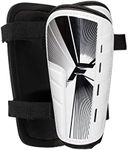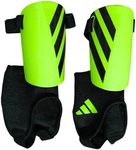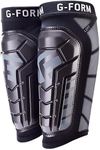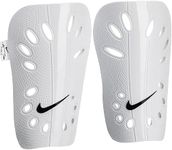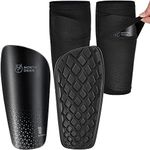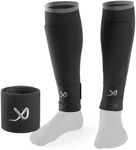Buying Guide for the Best Shin Guards
When it comes to picking the right shin guards, it's important to consider several key factors to ensure you get the best fit for your needs. Shin guards are essential for protecting your legs during sports activities, particularly in soccer, where they help prevent injuries from kicks and collisions. The right pair of shin guards will offer a balance of protection, comfort, and mobility. Here are the key specifications to consider when choosing shin guards and how to navigate them to find the best fit for you.SizeSize is crucial because it determines how well the shin guards will fit and protect your legs. Shin guards come in various sizes, typically ranging from small to extra-large. The size you need depends on your height and the length of your shin. To find the right size, measure from just below your knee to just above your ankle. A properly sized shin guard should cover most of your shin without restricting movement. If you're a youth player, you might need a smaller size, while adults generally require larger sizes. Always refer to the manufacturer's sizing chart for the best fit.
TypeThere are different types of shin guards, including slip-in, ankle, and shin socks. Slip-in shin guards are lightweight and easy to wear, making them ideal for players who prefer minimal interference. Ankle shin guards offer additional protection with built-in ankle support, which is great for players prone to ankle injuries. Shin socks combine the shin guard with a sock, providing a snug fit and convenience. Choose the type based on your comfort preference and the level of protection you need. For example, if you need extra ankle support, go for ankle shin guards.
MaterialThe material of the shin guards affects their durability, weight, and comfort. Common materials include plastic, fiberglass, and foam. Plastic shin guards are lightweight and affordable, making them suitable for beginners. Fiberglass shin guards offer better protection and durability, ideal for more competitive players. Foam shin guards provide excellent comfort and shock absorption but may not be as durable as other materials. Consider your playing level and how often you play when choosing the material. Competitive players might prefer fiberglass for its durability, while casual players might opt for plastic or foam for comfort and cost-effectiveness.
Protection LevelThe level of protection offered by shin guards varies based on their design and materials. Higher protection levels are typically found in shin guards with thicker padding and additional features like ankle guards. If you play in a position where you're more likely to get kicked, such as a defender, you might need shin guards with higher protection. For forwards or midfielders who prioritize speed and agility, lighter shin guards with moderate protection might be more suitable. Assess your playing style and position to determine the right level of protection for you.
Fit and ComfortFit and comfort are essential for ensuring that you can move freely and play effectively. Shin guards should fit snugly without slipping or causing discomfort. Look for features like adjustable straps or sleeves that help secure the shin guards in place. Some shin guards also have ergonomic designs that conform to the shape of your leg for a better fit. Try on different models to see which ones feel the most comfortable and provide the best fit. Remember, if your shin guards are uncomfortable, they can distract you during play and affect your performance.
